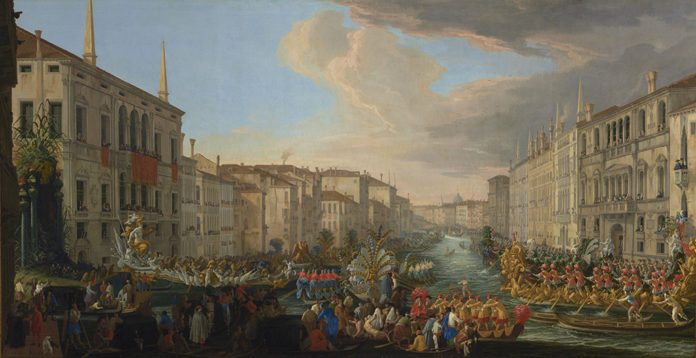
We live in a time where images — especially of a documentary nature — abound. At every turn of the head, click of a mouse, or swipe across a screen, we can see spectacular events from around the globe in near real time. What did they do in the 18th century? This.
For millennia, Europe’s most iconic cities have been the scene of events ranging from magnificent coronations, to festivals, and sometimes to disasters, all of which presented artists with ample opportunity to showcase their skills and document important events. During the 18th century, a number of princes, popes, and ambassadors took this a little further, specifically commissioning master painters such as Canaletto and Panini to record memorable happenings.

This 18th-century trend is explored through more than 40 works in Los Angeles at the J. Paul Getty Museum. Opened on May 9 and continuing through July 30, “Eyewitness Views: Making History in Eighteenth-Century Europe” is the first exhibition to focus on view paintings as documentary depictions of contemporary events.

“‘Eyewitness Views’ brings together an incredible array of international loans to tell the fascinating story of how artists captured, and in many ways created, history in 18th-century Europe,” says Timothy Potts, director of the J. Paul Getty Museum. “Both in their subject matter of spectacular public occasions, such as papal visits, and in the brilliance of their execution, these colorful panoramic views provide a window into history as well as a testament to the achievements of some of the era’s greatest painters. Ambitious exhibitions of this kind increasingly require the commitment of partner institutions, and we are particularly grateful to our colleagues in Minneapolis and Cleveland for their support in helping us realize this exhibition.”


To learn more, visit the J. Paul Getty Museum.
This article was featured in Fine Art Today, a weekly e-newsletter from Fine Art Connoisseur magazine. To start receiving Fine Art Today for free, click here.







